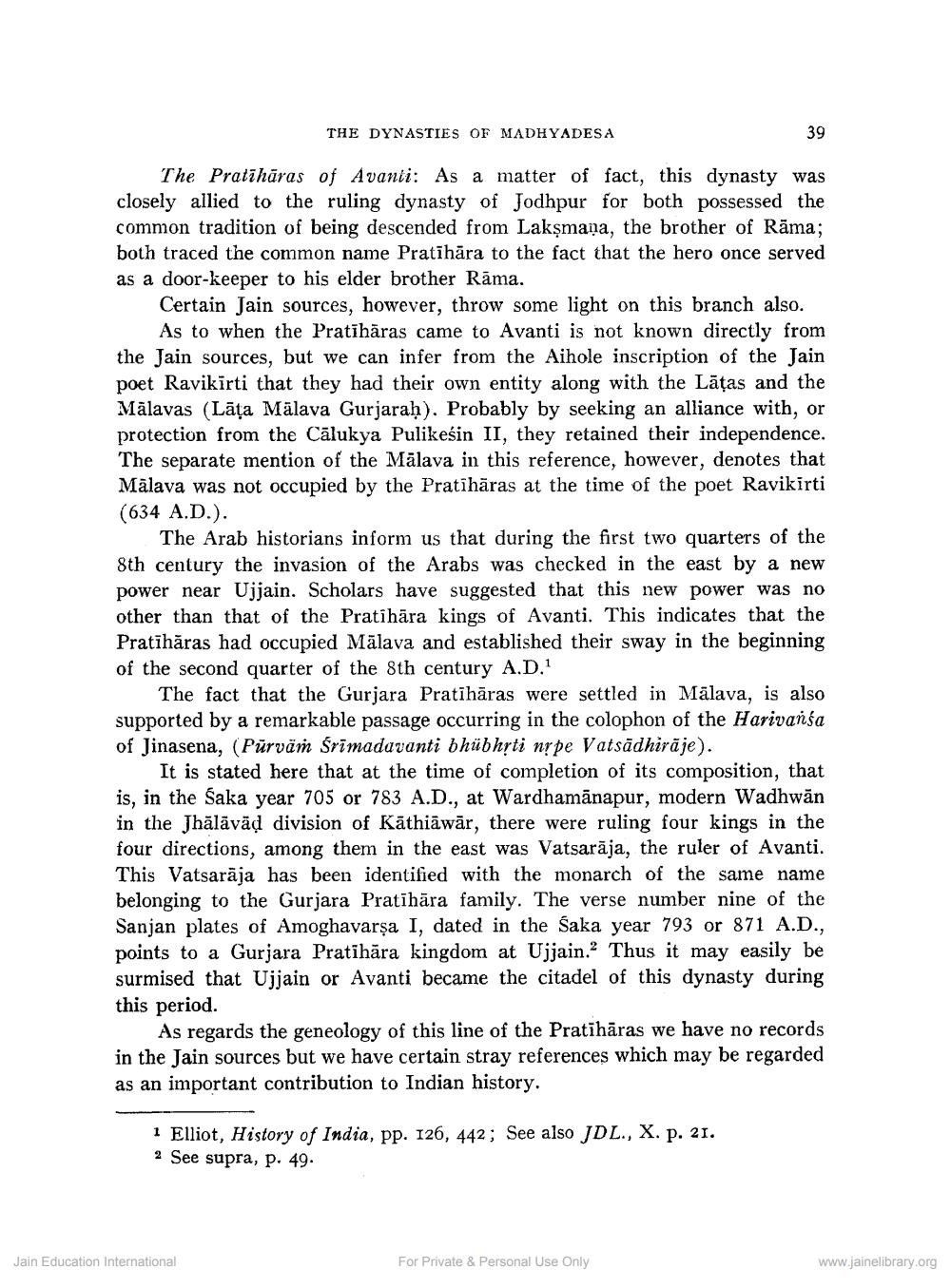________________
THE DYNASTIES OF MADHYADESA
39
The Pratīhāras of Avanti: As a matter of fact, this dynasty was closely allied to the ruling dynasty of Jodhpur for both possessed the common tradition of being descended from Laksmana, the brother of Rāma; both traced the common name Pratīhāra to the fact that the hero once served as a door-keeper to his elder brother Rāma.
Certain Jain sources, however, throw some light on this branch also.
As to when the Pratīhāras came to Avanti is not known directly from the Jain sources, but we can infer from the Aihole inscription of the Jain poet Ravikirti that they had their own entity along with the Lāțas and the Mālavas (Lāța Mälava Gurjarah). Probably by seeking an alliance with, or protection from the Cālukya Pulikesin II, they retained their independence. The separate mention of the Mālava in this reference, however, denotes that Mālava was not occupied by the Pratihäras at the time of the poet Ravikirti (634 A.D.).
The Arab historians inform us that during the first two quarters of the 8th century the invasion of the Arabs was checked in the east by a new power near Ujjain. Scholars have suggested that this new power was no other than that of the Pratihāra kings of Avanti. This indicates that the Pratīhāras had occupied Mālava and established their sway in the beginning of the second quarter of the 8th century A.D.
The fact that the Gurjara Pratīhāras were settled in Mālava, is also supported by a remarkable passage occurring in the colophon of the Harivansa of Jinasena, (Purväm śrīmadavanti bhübhịti npe Vatsādhirăje).
It is stated here that at the time of completion of its composition, that is, in the Saka year 705 or 783 A.D., at Wardhamānapur, modern Wadhwan in the Jhālāväd division of Kāthiāwār, there were ruling four kings in the four directions, among them in the east was Vatsarāja, the ruler of Avanti. This Vatsaräja has been identified with the monarch of the same name belonging to the Gurjara Pratīhāra family. The verse number nine of the Sanjan plates of Amoghavarşa I, dated in the Saka year 793 or 871 A.D., points to a Gurjara Pratihāra kingdom at Ujjain. Thus it may easily be surmised that Ujjain or Avanti became the citadel of this dynasty during this period.
As regards the geneology of this line of the Pratīhāras we have no records in the Jain sources but we have certain stray references which may be regarded as an important contribution to Indian history.
1 Elliot, History of India, pp. 126, 442; See also JDL., X. p. 21. 2 See supra, p. 49.
Jain Education International
For Private & Personal Use Only
www.jainelibrary.org




